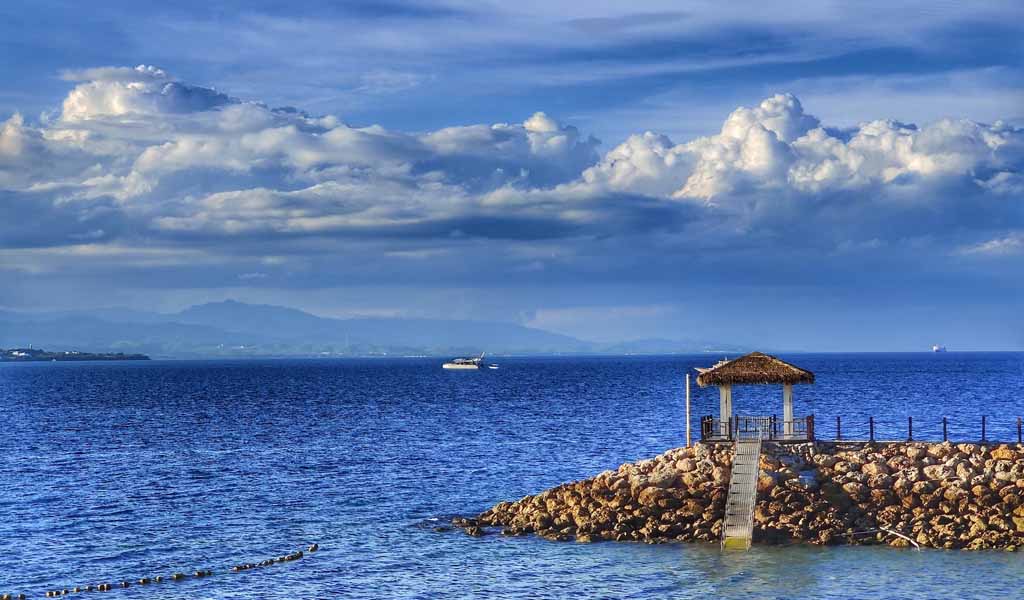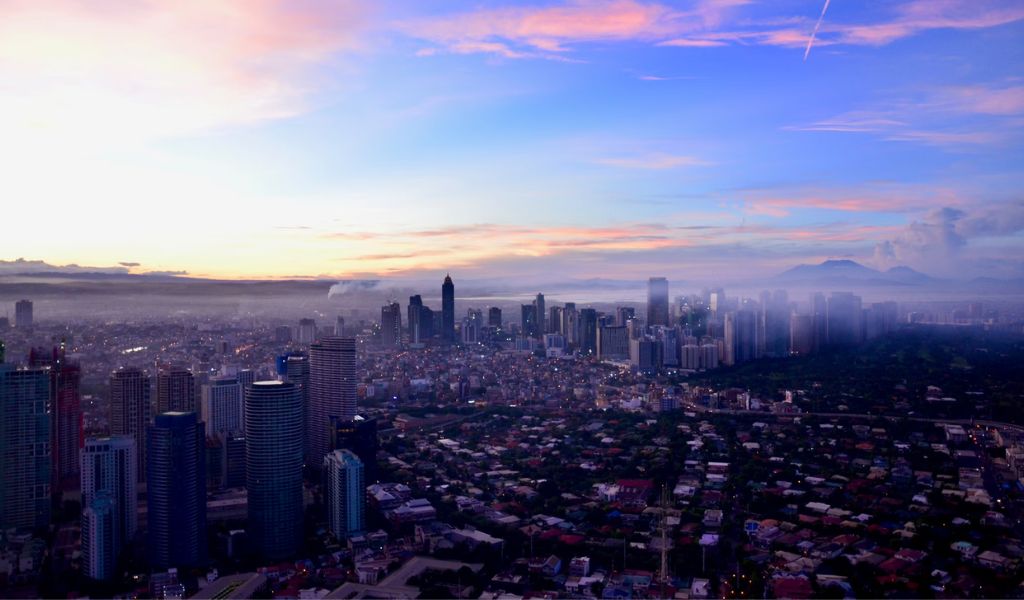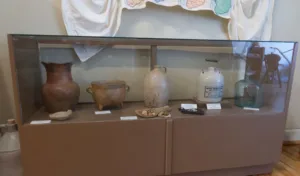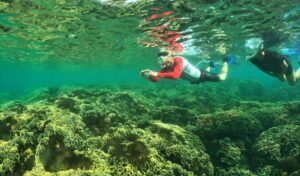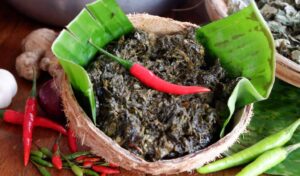Welcome to the Heart of the Visayas: Cebu’s Charm Unveiled
Cebu Philippines tourist spots – Nestled in the central Visayas region of the Philippines, Cebu stands as a beacon of culture, history, and natural beauty. With its bustling metropolis and pristine beaches, this island province offers a treasure trove of experiences for every kind of traveler. Whether you’re a history buff, beach lover, or adventure seeker, Cebu’s tourist spots will surely captivate your heart and fill your camera roll. So grab your sunhat and dive into the top 10 must-visit tourist spots that make Cebu a tropical paradise you can’t miss!
1. Magellan’s Cross – A Historical Pillar
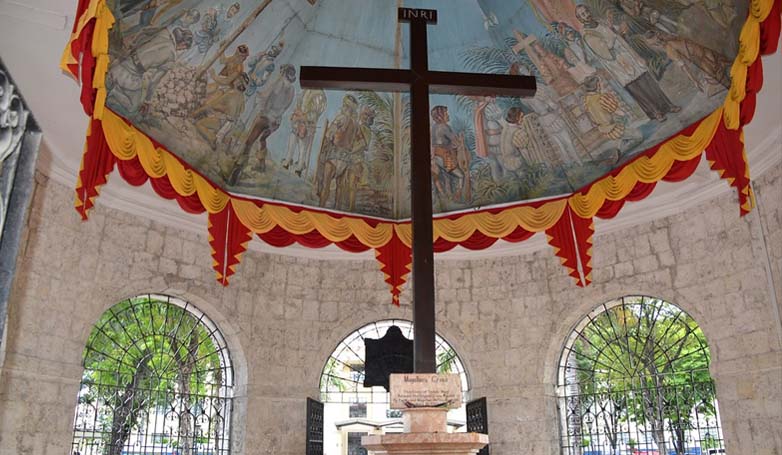
Magellan’s Cross is one of Cebu’s most iconic historical landmarks, located in the heart of Cebu City. This cross, planted by Portuguese explorer Ferdinand Magellan in 1521, marks the arrival of Christianity in the Philippines. It is housed in a small, beautifully designed chapel next to the Basilica Minore del Santo Niño, where the original cross is encased in a protective wooden structure.
The cross is not only a symbol of the Philippines’ Christian heritage but also a popular tourist attraction, drawing visitors from around the world who seek to learn about the country’s colonial past. Locals and tourists alike visit the site to pay homage, reflect on its historical significance, and experience its cultural importance in shaping Cebu’s identity as a center of Christianity in Southeast Asia.
2. Kawasan Falls – A Cascading Delight
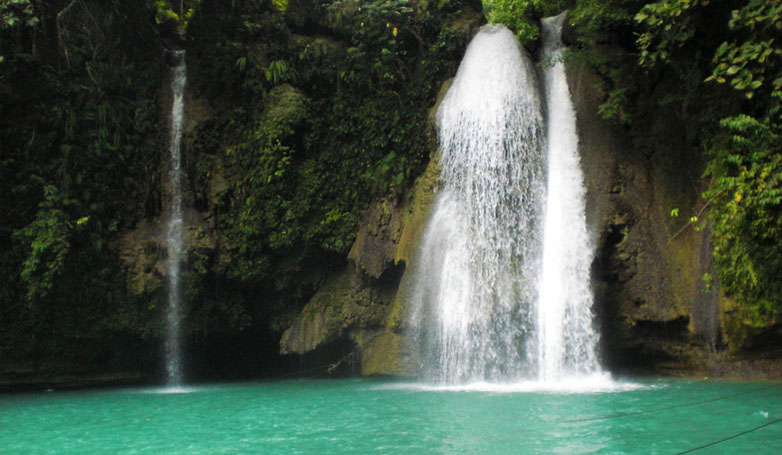
Kawasan Falls, located in the town of Badian, Cebu, is one of the most famous and stunning natural attractions in the Philippines. Known for its vibrant turquoise waters and lush surrounding jungle, the falls is a popular destination for both locals and tourists. The falls is a multi-tiered cascade, with the main waterfall being the most impressive, plunging into a clear, refreshing natural pool perfect for swimming.
Visitors often enjoy activities such as canyoneering, which involves navigating the rugged river canyons upstream before reaching the falls. The serene beauty and exhilarating outdoor adventures make Kawasan Falls a must-visit destination for nature lovers and thrill-seekers alike, offering an unforgettable experience immersed in Cebu’s breathtaking landscape.
3. Oslob Whale Shark Watching – A Gentle Giant Encounter
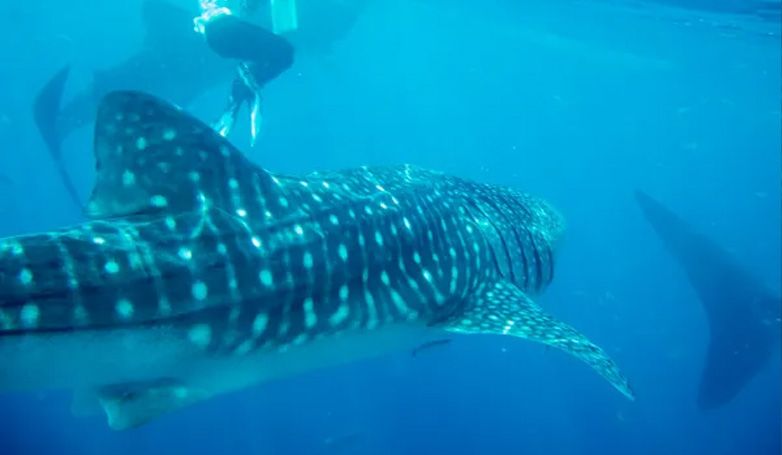
Oslob Whale Shark Watching is a world-renowned attraction located in the town of Oslob, Cebu, offering a once-in-a-lifetime opportunity to swim with the gentle giants of the sea. The area is known for its close encounters with whale sharks, the largest fish species on Earth. Tourists can experience this awe-inspiring activity by taking a boat ride and snorkeling in the crystal-clear waters, where they can safely observe and interact with these magnificent creatures up close.
The whale sharks, known locally as “butanding,” are drawn to the area by local fishermen who provide them with food, creating a unique opportunity for tourists to witness the gentle feeding habits of these majestic animals. While Oslob Whale Shark Watching has become a popular tourist activity, it is important to be mindful of conservation efforts to ensure the protection of these incredible creatures and their natural habitat.
4. Santo Niño Basilica – A Spiritual Haven

The Santo Niño Basilica, officially known as the Basilica Minore del Santo Niño, is one of the oldest and most significant religious sites in the Philippines, located in Cebu City. Established in 1565, the basilica is home to the revered image of the Santo Niño (Holy Child), a statue of the infant Jesus, which is believed to have been given to the Queen of Cebu by Portuguese explorer Ferdinand Magellan in 1521. This image is considered a miraculous symbol of Cebu’s Christian heritage and is central to the city’s annual Sinulog Festival, a grand celebration in honor of the Santo Niño.
The basilica’s architecture is a beautiful blend of Renaissance and Baroque styles, attracting both pilgrims and tourists who come to admire its historical and cultural significance. The site is also a popular place of worship, where visitors can attend Mass and reflect on the deep-rooted Catholic traditions that continue to shape Cebu’s identity.
5. Tops Lookout – Cebu City’s Panoramic Viewpoint
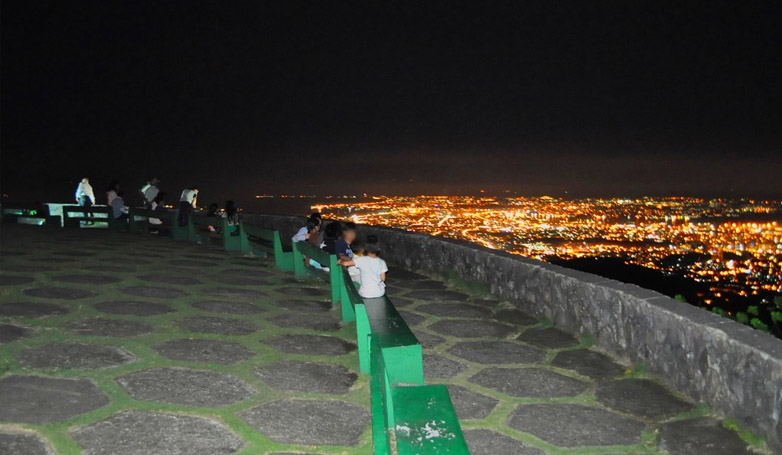
Tops Lookout is a popular tourist destination in Cebu City, offering a stunning panoramic view of the entire city, neighboring islands, and the sparkling waters of the Mactan Channel. Situated atop the mountain in the Busay area, the viewpoint provides a breathtaking vantage point, especially during sunset and nighttime when the city lights come alive. The scenic spot is a favorite among visitors for its cool breeze, tranquil atmosphere, and breathtaking landscape.
Aside from the scenic views, Tops Lookout is also a great place to unwind, enjoy a cup of coffee, and take in the beauty of Cebu’s urban and natural surroundings. The viewpoint is accessible by car, making it a convenient escape for locals and tourists seeking a peaceful retreat away from the hustle and bustle of the city.
6. The Tumalog Falls – A Majestic Drizzle

The Tumalog Falls, located in the municipality of Oslob, Cebu, is a serene and picturesque waterfall known for its unique beauty and tranquil atmosphere. The falls features a wide curtain of cascading water that flows over a moss-covered limestone wall, creating a mesmerizing veil-like effect. The crystal-clear water flows into a shallow pool below, perfect for a refreshing swim. Surrounded by lush greenery and the cool mountain air, Tumalog Falls provides visitors with a peaceful escape, away from the crowded tourist spots. Easily accessible via a short walk or motorbike ride from the main road, it has become a popular destination for nature lovers, photographers, and those seeking a calm retreat amidst Cebu’s natural beauty.
7. Temple of Leah – Cebu’s Taj Mahal
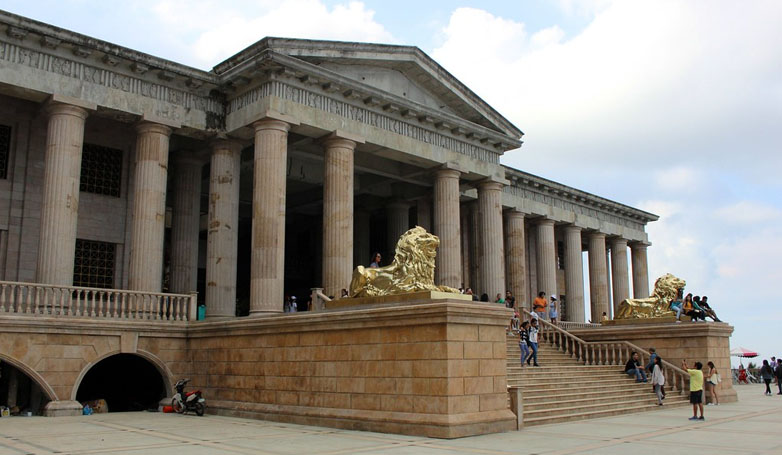
The Temple of Leah, located in Cebu City, is a grand tribute to Leah V. Albino-Adarna, built by her husband, businessman and philanthropist Tonyboy Adarna, as a symbol of his undying love and devotion. The temple, often referred to as the “Taj Mahal of Cebu,” is an impressive structure inspired by Roman architecture, featuring towering columns, intricate carvings, and a majestic façade. It is perched on a hilltop in the mountainous area of Busay, offering visitors a breathtaking panoramic view of Cebu City and the surrounding islands.
The temple houses various statues, paintings, and artifacts that showcase the love story and legacy of Leah, making it a popular spot for tourists, couples, and those interested in Cebu’s cultural history. Its serene atmosphere, combined with its striking architecture, makes the Temple of Leah a must-visit destination for those seeking beauty, history, and romance in Cebu.
8. Moalboal Sardine Run – An Underwater Spectacle
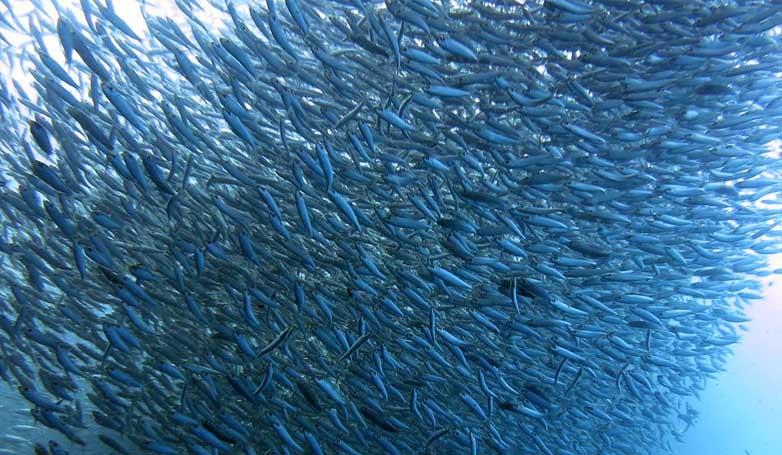
The Moalboal Sardine Run is one of the Philippines’ most spectacular underwater experiences, attracting divers and snorkelers from around the world. Located off the coast of Moalboal in Cebu, this natural phenomenon involves massive schools of sardines that swim in synchronized, shimmering clouds, creating a breathtaking display beneath the water’s surface. The sardines gather near the shores of Panagsama Beach and are often accompanied by other marine life, including sea turtles, reef sharks, and various species of fish.
The sheer volume and fluid movement of the sardines, combined with the vibrant coral reefs, make it a dream destination for underwater enthusiasts. Whether you’re a seasoned diver or a beginner snorkeler, the Moalboal Sardine Run offers an unforgettable encounter with one of the ocean’s most captivating sights.
9. Fort San Pedro – A Glimpse of the Past
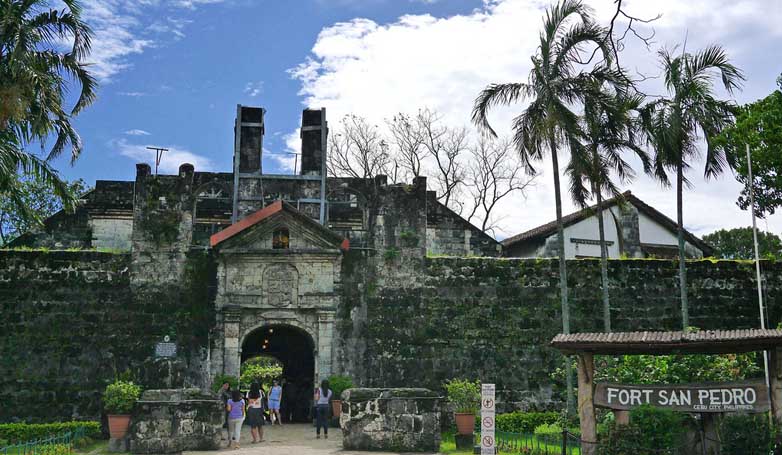
Fort San Pedro, located in Cebu City, is a historic military stronghold and one of the oldest and smallest forts in the Philippines. Built in 1565 by Spanish conquistadors under the leadership of Miguel López de Legazpi, the fort was originally constructed to defend the Spanish settlement from pirate attacks and to establish control over the region. The fort’s triangular structure features thick coral stone walls, watchtowers, and a central courtyard, offering visitors a glimpse into Cebu’s colonial past.
Today, Fort San Pedro has been transformed into a museum, showcasing artifacts, historical exhibits, and murals that tell the story of its military and cultural significance. The fort’s well-preserved architecture, combined with its scenic location overlooking the Cebu harbor, makes it a popular historical landmark for tourists and history enthusiasts alike.
10. Mactan Shrine – The Battle of Mactan Legacy
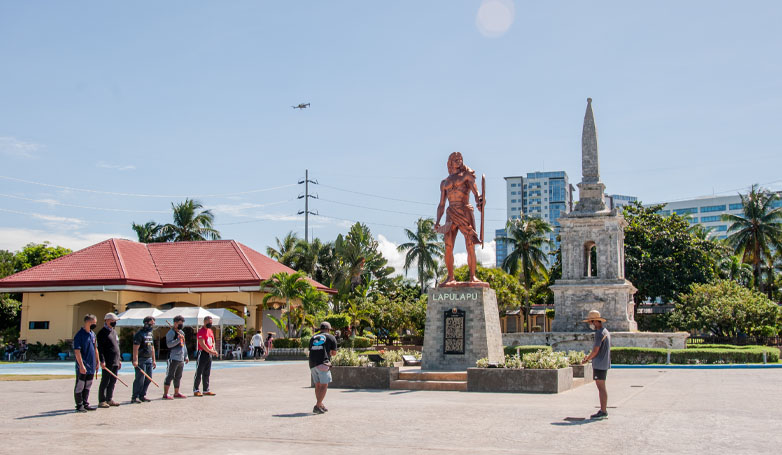
Mactan Shrine, located in Lapu-Lapu City on Mactan Island, Cebu, is a historically significant landmark that commemorates the Battle of Mactan, where the local chieftain, Datu Lapu-Lapu, famously defeated the Spanish forces led by Ferdinand Magellan in 1521. The shrine features a statue of Lapu-Lapu, standing tall in tribute to his bravery and resistance against foreign colonization.
It is also home to the Magellan Shrine, which marks the site where Ferdinand Magellan was killed during the battle. The monument is a focal point for Filipino pride and a popular tourist attraction, offering visitors a glimpse into the Philippines’ rich pre-colonial history. Surrounded by lush gardens and a peaceful atmosphere, Mactan Shrine serves as both a cultural landmark and a place of reflection on the nation’s fight for independence.
Additional Tips for Traveling to Cebu
- Currency & Payments: The currency in the Philippines is the Philippine Peso (PHP). Credit cards are accepted in most hotels and larger restaurants, but it’s advisable to carry cash for smaller establishments and local markets.
- Language: The primary language spoken in Cebu is Cebuano (also known as Bisaya). Filipino (Tagalog) and English are also widely spoken, especially in urban areas and tourist spots, so communication is rarely a problem for English-speaking tourists.
- Cultural Sensitivity: When visiting religious sites or participating in local customs, it’s important to show respect. Dress modestly in churches and religious events, and if you’re unsure about the appropriate behavior, don’t hesitate to ask a local or your guide.
- Environmental Responsibility: Cebu’s natural beauty is one of its greatest assets. Be a responsible tourist by not littering, respecting wildlife, and following guidelines when participating in activities like diving or interacting with marine life.
- Emergency Numbers: For emergencies, the national emergency number in the Philippines is 911. Tourists can also dial 117 to reach the Philippine National Police hotline.
- Travel Insurance: It is highly recommended to have comprehensive travel insurance that covers medical emergencies, accidents, trip cancellations, and lost luggage.
- Health: Protect yourself from mosquito-borne diseases like dengue fever by using repellent and wearing long sleeves and pants. Depending on your travel plans, you may want to consult with a healthcare professional about recommended vaccinations before your trip.
Conclusion
As our list of top tourist spots in Cebu comes to a close, it’s clear that this vibrant island has much to offer. From the adrenaline rush of swimming with whale sharks to the peaceful reflection at ancient temples, Cebu strikes the perfect balance between adventure and serenity. It’s no wonder that travelers from around the globe are drawn to its shores year after year. So whether you’re saying goodbye or planning your next adventure, Cebu leaves a lasting impression that beckons you to return. Keep the spirit of exploration alive, and who knows what other wonders you’ll discover on your next visit to this enchanting island paradise in the Philippines.
FAQs About The Cebu Philippines Tourist Spots
1. Can you swim with the whale sharks in Oslob?
Yes, you can swim with the whale sharks in Oslob. However, interactions are regulated to ensure the safety of both the whale sharks and the tourists. It’s important to follow the guidelines provided by the local tour operators.
2. Are there good beaches in Cebu?
Yes, Cebu boasts numerous beautiful beaches. Some of the most popular beaches can be found on Mactan Island, Bantayan Island, Camotes Islands, and Moalboal. These locations offer excellent opportunities for swimming, snorkeling, and diving.
3. What is the best time to visit Cebu?
The best time to visit Cebu is during the dry season, from December to May. January is particularly lively due to the Sinulog Festival, which is one of the country’s most colorful festivals, celebrating the Santo Niño. However, it’s also the peak tourist season, so expect bigger crowds and higher prices.
4. Are there any cultural festivals in Cebu?
Cebu is famous for its cultural festivals. The most prominent is the Sinulog Festival, celebrated every third Sunday of January in honor of the Santo Niño (Child Jesus). It features colorful parades, street dancing, and religious activities. Other festivals include the Kadaugan sa Mactan in April and the Kabanhawan Festival in Minglanilla during Easter.
5. Are there any dress codes or clothing recommendations for tourists?
While there’s no strict dress code, it’s recommended to dress modestly, especially when visiting religious sites. Lightweight, breathable clothing is ideal due to the tropical climate. For outdoor activities, appropriate gear would include swimwear, comfortable walking shoes, and protective equipment as required.

